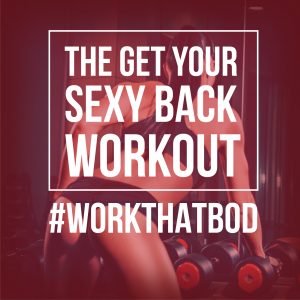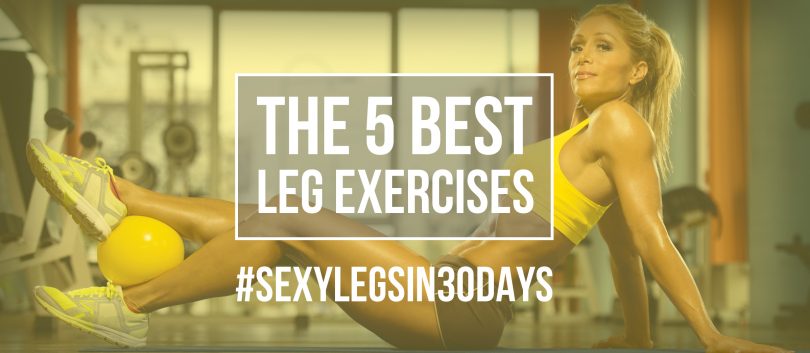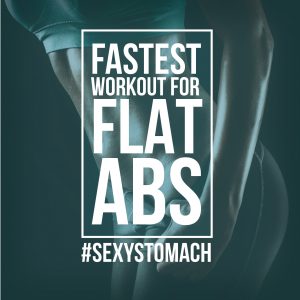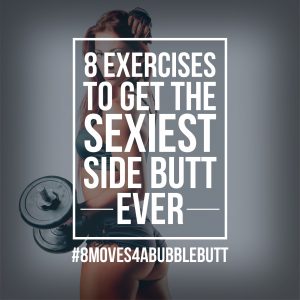Open up Pinterest or Instagram, and you’ll very soon see a flexing woman in a sports bra with a slogan like “Suck it up now so you won’t have to suck it IN later” and “Earn your selfie.” Online, under tags like “fitspiration” and “workout motivation,” there are many, many photos of women who appear to have no heads, just abs.
Selfies in skimpy tops. Bikini bodies. Lots of half-covered butts. Form-fitting yoga pants.
Right next to that, there’s a poster that says: “Athletes eat and train, they don’t diet and exercise.” And one that says “I don’t want another girl’s body. I want my body, leaner, stronger and healthier.” There are practical tips on weightlifting, running and eating healthy. Charts on how many reps to do, ways to stay motivated on your run and playlists for CrossFit.
These are both sides of the tension over health, fitness and diet, playing out in a highly visual and highly viral way.
“Why are fitness motivation themes more popular? Ideally it’s because of a change in perspective in the broad culture, and more awareness about female fitness being a good thing,” says Leisa Meyer, Professor of American Studies and History at The College of William and Mary in Williamsburg.
“There are trends toward accepting different body types and not just the unattainable ones. But there will always be idealized images that for the average person are completely unattainable, no matter what diet or exercise they adopt. It will always be something unachievable, because discontent creates consumers of stuff who are unhappy,” says Catherine Sabiston, Ph.D., Canada Research Chair in Physical Activity and Mental Health, Associate Professor, Faculty of Kinesiology & Physical Education at the University of Toronto.

#DealingWithIdealBodies
Body image includes what a woman thinks about herself, and if it’s dissatisfaction, that can be linked to more traditional health outcomes like depression and anxiety. Seeing images of ideal bodies can be difficult for an individual’s sense of self.
Right now, the experts say that the ideal body for American females (the hourglass with a very slim build) has not changed that much. It’s more toned, yes, but still not with significant muscle mass.
The ideal woman’s body in 2016, if these highly “favorited” images are to be believed, is one that’s tall and thin but not skinny, with washboard abs and toned muscles…oh, and curvaceous. Large breasts and a bubble butt. And tanned skin. With long, thick highlighted hair. Sound like a bunch of contradictions?
It’s actually a recurring American trend. According to Meyer, who is on the college’s executive committee of the gender, sexuality and women’s studies program, the narrowing of the “ideal body” for women isn’t new.
#MorePowerMoreScrutiny
“Historically, the ideal female body type changes, during moments when there are changes in society. One of the ways that there’s backlash against women gaining more power is for their body types and clothing types to be more restricted,” says Meyer.
For example, the flapper of “the Roaring 20s” and the boho hippie of the counterculture 1960s were both during times of changing women’s roles in America. Both featured waifish, childish body types—and Meyer thinks this is more than coincidental. Today, many describe the ideal as a cinched waist with a Kardashian-eque full bottom but thin thighs—difficult to achieve for most body types.
While images of women in popular culture have been around as long as catalogs and magazines, there’s now social media to contend with—bringing more diverse images, but also a cascade of images throughout our lives in places where we are working, connecting and reading. They arrive as part of advertising, selfies and titillation dressed as fitness. Sexiness sells, you could say.
#SexinessSells
Sabiston studied body image and advertising for her thesis and looked at fitness advertising and its impact on body image changes.
“We showed running shoes versus good-looking models wearing the shoes. The results were that models affected people’s body image worse,” says Sabiston. Today there is even more advertising and it’s harder to avoid.
One tip she has for identifying images that are likely trying to sell you something: look at the lighting, what they are wearing and the dismembering of body parts in the shot, which is always depersonalizing and sexualizing.
“In our culture, women are sexualized. Even fitness-oriented images—we can’t get away from it. The distinctions are between the intentionally provocative, like an ad for sportswear, or a purely positive one like women finishing a marathon or winning the World Cup,” says Meyer.
Meredith Hurley from Manassas says that she’s wary of fitspiration.
“Just because they use buzzwords like strong, healthy and powerful doesn’t change the message that women are expected to look a certain way. All the motivational pictures I’ve seen are examples of perfection and that’s not really empowering to the vast majority of women who aren’t even genetically capable of attaining that.”
But Hurley still supports healthy, real live women working out and sharing online. “I love seeing my friend’s achievements and find them to be far more inspiring than what I see on Pinterest.”
For her though, it’s about trying to feel her best walking, biking and doing yoga. “It lets me focus on attainable goals that promote physical and mental health,” she says.
#BeSoreTomorrowNotSorry
Fitspiration has arguably more merit than her sister “thinspiration” in which women tag and post about how thin they’d like to be, often dipping into pro-anorexia territory and encouraging radical dieting and eating disorders. Those photos are nearly all cut into body parts, of visible ribs, jutting hipbones and obvious thigh gaps.
And in those threads, there has also been a reverse trend to say, “Sexy is not a size. Every calorie is not a war, your body is not a battleground.” Those posters say “Focus on getting healthier, not lighter” and “The only bad workout is the one that didn’t happen.” How does “Be the person you were too lazy to be yesterday” strike you? Meyer says there’s a “catch-22” in these spaces.
“Is it the carrot or the stick? Does seeing images of fit women motivate you or demoralize you?” she says.
#ExcusesDontBurnCalories
Research on the topics says that extrinsic motivation is not sustainable for long term.
“Maybe it gets people to start but it’s not known to help people exercise for very long. Shaming and guilting people into exercising and getting fit doesn’t really work. The key is around a person’s image and enjoyment rather than their weight and appearance. Competition with others is a negative,” Sabiston says.
One of the positive aspects of social media is that we are seeing a greater range of images than previously shown in traditional media.
“In social media, there is some range of body types. It helps address more people that way, and they feel represented. That includes more muscle tone and strength, what we would have traditionally seen for me. And, that’s shifting to thinks like the covers of fitness magazines where there is more visible muscle mass,” said Sabiston.
#SocialMediaUpstheAnte
Social media offers a level of surveillance in fitness that has never been present before, and how you work out used to just be between you and your gym. Now it’s being commented on a lot more.
“With social media, there’s pressure for everyone to present themselves at their best,” says Sabiston.
Suki Lucier, a cyclist and fitness enthusiast from Washington, D.C., says that “fitspiration” doesn’t work for her.
“I can’t help but notice there are few to no fitspiration memes on Pinterest about ‘In a month, this could be your cholesterol level!’ or your resting heart rate … or your fasting blood glucose… or any other legitimate measure of health or fitness,” she says.
Lucier gets to the gym four or five times a week, and runs, rides and hikes in her spare time. She stays motivated because she loves the outdoors and her group exercise classes.
“I’ve learned that when I exercise regularly, ‘strong’ is the main descriptor I associate with my body, and as complicated as body image issues can be, that’s huge for me.” She doesn’t need fitspiration, clearly.
“Most of them seem to focus on the abs or butt you could have in a month. And I have nothing against being proud of what you’ve got and wanting to show it off, but I’m not crazy about the conflation of ‘hotness’ and ‘fitness’ that I feel the fitspiration meme culture encourages,” she says.
It appears that fitspiration may kickstart your workout, but it will take a lot more motivation to keep you moving.





